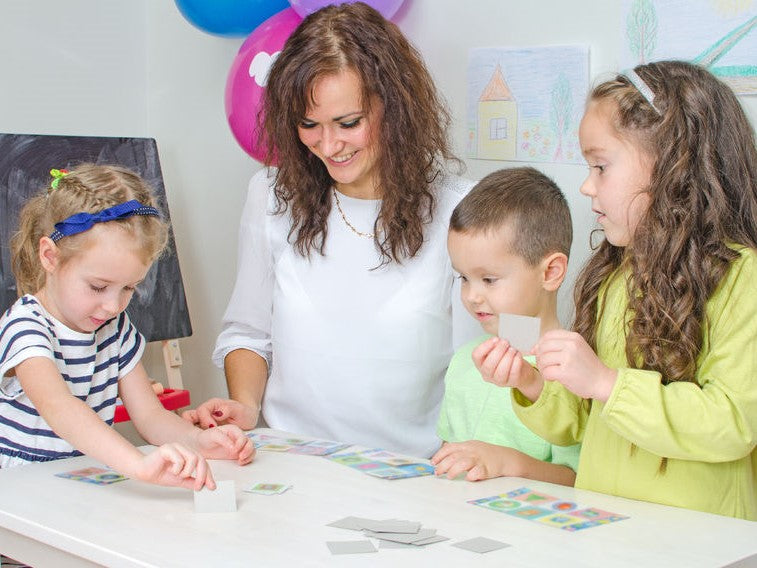
Greetings, My Friend!
I love hearing my language-kids talk.
However, when we’re sitting there drilling-and-instilling past tense, and Johnny interjects a story about his trip to his grandma’s last weekend and says, “We drived to Atlanta last Saturday,” I wanna beat my head against the wall! Sigh.
So, what’s an SLP do?
Interrupt the excitement and the kid’s train of thought to correct his grammar? Wait until he’s done then refer back to his grammar? Make him say it again, the correct way? Or, just move on, not say anything and rejoice in his trip to Atlanta?
NEWSFLASH:
When kids talk conversationally they just think about what they want to say,
i.e., their intent;
Not HOW they’re saying it.
Here’s what I think; maybe you’ll agree….
During therapy, many of our kids miss the point that the tasks we do are meant to transfer into usage and real life. They don’t understand that the tasks are not ‘assignments’ to merely get done and forget.
We could strike out into several different discussions from that statement, but for today, I’m sharing asimple andtangible way to bring thinking, use, and consistency into therapy.
I have a page for you to download, print and use during your therapy sessions that may help. Use it throughout the year, especially with your language-kids.
Download it, print it, laminate it, display it--on the wall, on the table, on individual cards; whatever.Have it close by so you can easily reference it as you work with your kids.
You may even have one like it. Your kids may think it’s a nice list that contains rules. I’ve chosen instead, to refer to the list as a CODE. I like the word CODE. It’s a system; we each have a personal code to live by, a moral code, and now, a conversation code.
When you first shareThe Conversation Code, emphasize the wordcode. Look it up online via “definition of a code to live by,” and perhaps for some kids, look up the wordconversation.
It’s pretty handy.
Here are examples to use during therapy and discussions:
“Okay Kristy, you need to take your turn, sweetie,” or,
“Tyler, it’s your turn to listen now, instead of talk,” or,
“Johnny, ‘drived’ was not right. What word should you have said?”
Instead of saying the above, discreetly get the child’s attention, look and point up toThe Conversation Code and say and/or show them the appropriate number of fingers on your hands,
“Kristy, 3;” or,
“Tyler, 1,” or,
“Johnny, 7; drove.”
Obviously, you’ll need to review it several times and go over and give examples of what each one means, and why each one is important. Eventually, the kids will remember and equate the numbers with the conversation concepts. Most of all,they’ll remember the concepts.
The following will get you started:
“#1 and #2”emphasize listening; and “#3 - #8”have to do with speaking and interacting.
“#2. Look interested while you listen” is helpful for the child that squirms and looks around when it’s not his turn. Quietly get his attention, show him two fingers on your hand and a knowing look on your face “you need to be part of the group; show respect while you listen.”
“#3. Take your turn” can be a reminder for a child not to interrupt. Or, it can mean, “you need to listen, it’s your turn.” This is a good one to start with to introduce The Code. Do it a couple times during the first session so the kids (and you) get used to you referencing the numbers. Continue to review The Conversation Code and gradually add the additional numbers to your therapy sessions as needed.
“#4. Think before you speak” allows processing time. If another child becomes impatient with the child that is supposed to be responding, just indicate with four fingers raised, and you don’t have to say a thing. Also, putting up four fingers is good for the impulsive speaker.
“#5. Talk to everyone; get eye contact.” Talk about how you feel when someone doesn’t look at you during the conversation; you feel left out. Conversely, when they do look at you, how does that make you feel?
“#6. Use the BEST words” has to do with vocabulary. The BEST words mean, use the best words that get your point across. If you’re working on vocabulary, it may mean, suggesting to them to use a Tier 2 (higher-level) word, rather than Tier 1 word.
“#7. Use good grammar.” Indicate the #7 with your fingers and simultaneously say the correct word. You want them to immediately go back and insert the correct word in the original sentence. In other words, capture and correct the word-usage at the moment of use. (This one requires you to stay on your toes!)
“#8. Say things others want to hear” is an advanced conversation skill, but can be planted with younger children, as well.
It will take some children several weeks to learn The Conversation Code; it’s a memory task. But it pays off. What you’ve done is “code” your language instruction to use during times when you don’t want to crush their expressive participation.
Also, no one child is singled out;The Conversation Code is for everyone. It discreetly informs and helps them to adjust and improve their languageduring conversation.
See ya next week. Have a good one!
Char
Leave a comment (all fields required)
Comments will be approved before showing up.

![#71 Telepractice Tips 'n Info (Part 4) [Is my child working or just playing games?]](http://speechdynamics.com/cdn/shop/articles/Game_Pieces_and_Hand_7_x_3_2048x.jpg?v=1605804364)
